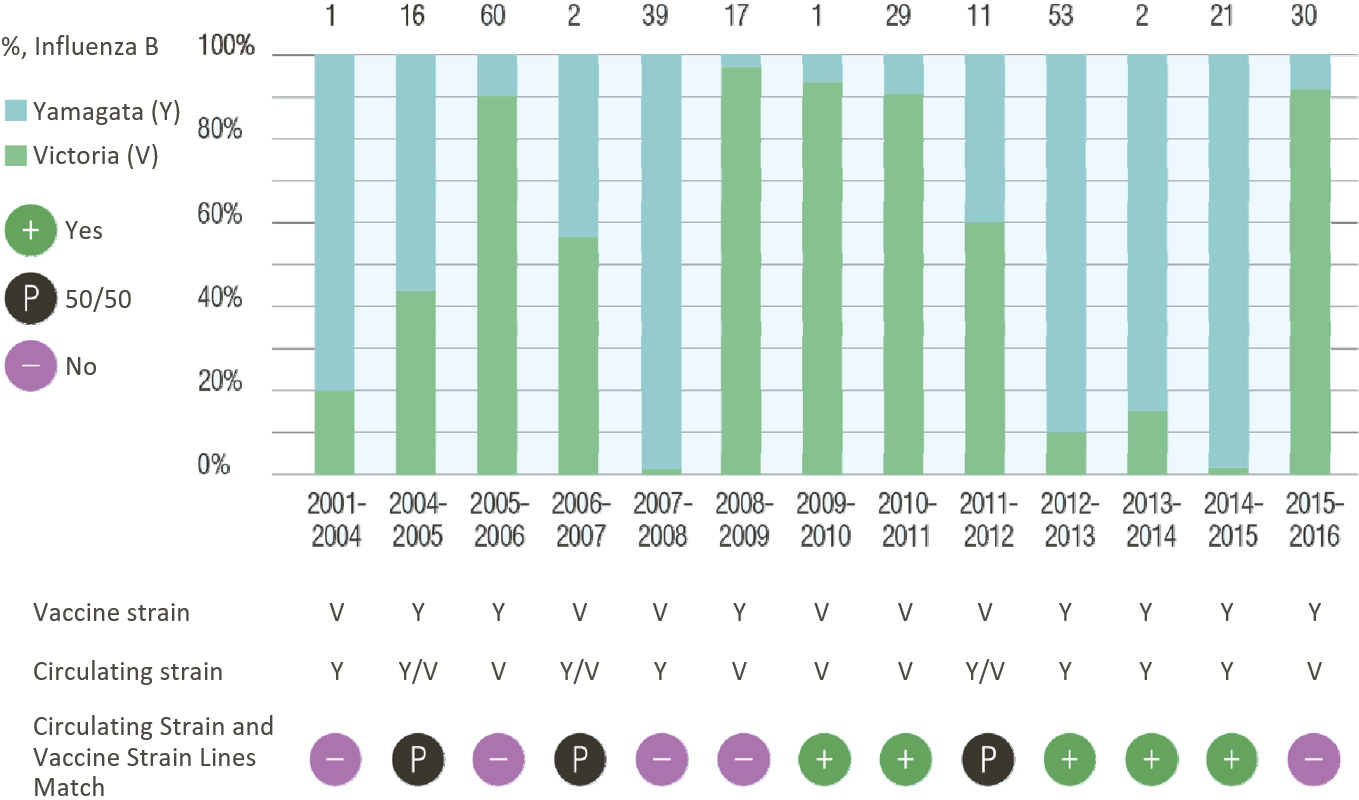Influenza B
Since 2012, WHO has been recommending the inclusion of both Yamagata and Victoria influenza B viruses in seasonal influenza vaccines on annual basis

According to WHO, annual epidemics of seasonal influenza result in 3 to 5 million cases of severe illness and 250,000 to 500,000 lethal outcomes worldwide1.
Respiratory diseases and influenza are the 3rd leading cause of lethal outcomes2.
TOP-3 LEADING CAUSES OF LETHAL OUTCOMES IN THE WORLD (2016)
Circulatory system diseases
New malignancies
Respiratory diseases
Influenza provokes complications in patients with diabetes mellitus, cardiovascular, bronchopulmonary and other chronic diseases3, 4.
The current epidemic process is characterized by the simultaneous circulation of two influenza A subtypes and two influenza B strains1.
The clinical manifestations of influenza do not yield to influenza A by symptomatology and severity.
FRANCE (GROG — NETWORK OF SENTINEL GENERAL PRACTITIONERS AND PEDIATRICIANS); THE DATA FOR THE PERIOD 2003/2004 — 2012/21013 EXCLUDING 2009/2010 [12]5.
| Group 15-64 years old patients | Group 65+ years patients | |||
| Influenza B (Victoria or Yamagata) N=1213 | Influenza A (H1N1 or H3N2) N=4787 | Influenza B (Victoria or Yamagata) N=73 | Influenza A (H1N1 or H3N2) N=195 | |
| % of patients with 7 or more symptoms | 68,4 | 68,9 | 56,2 | 53,9 |
| Fever | 96,6 | 96,3 | 97,3 | 95,8 |
| Myalgia | 89,3 | 89,1 | 84,9 | 77,3 |
| Cephalalgia | 81,5 | 81,8 | 73,6 | 65,5 |
| Cough | 90,0 | 88,4 | 94,4 | 89,2 |
| Bronchitis | 8,9 | 9,4 | 15,9 | 16,7 |
| Pharyngitis | 67,0 | 61,0 | 46,5 | 51,8 |
| Otitis | 9,3 | 6,7 | 0,0 | 3,1 |
Flu morbidity is variable and unpredictable
Data for 26 countries for the years of 2000-2013.
(935 673 cases)6.
Southern Hemisphere (5 countries)
Northern Hemisphere (7 countries)
Tropical Belt (14 countries)
Worldwide (26 countries)
The median proportion of cases caused by influenza B virus amounted to
This proportion varied from season to season:
- < 20% in 90 seasons;
- 20— 50% in 82 seasons;
- > 50% in 28 seasons.
In a number of seasons, both lines of influenza B virus (Yamagata and Victoria) circulated.
Circulation of both lines influenza virus is heterogeneous and unpredictable
GLOBAL MONITORING RESULTS (2003-2016)7.

In 8 seasons out of 13, there has been observed:
- co-circulation of influenza B viruses of both lines;
- mismatch between the vaccine strain and the circulating strain of influenza B virus.